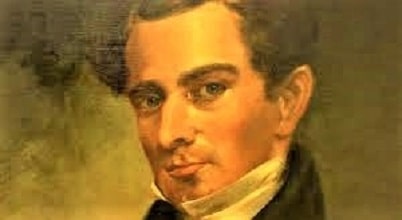Stephen F. Austin or Stephen Fuller Austin (born on November 3, 1793, and died on December 27, 1836,) was an American businessman born in Virginia and raised in southeastern Missouri. Known as the Father of Texas, he brought hundreds of families from the United States to the region (1825).
He worked with the Mexican government to support immigration from the United States. Many places and institutions have been named after him, as the capital of Texas, Austin in Travis County, the County Austin, Austin Bayou, Stephen F. Austin State University in Nacogdoches, Austin College in Sherman, and a good number of colleges.
Quick Facts: Stephen F. Austin
- Known for: Key role in the US colonization of Texas and its successor to Mexico
- Born: November 3, 1793, in Virginia
- Parents: Moses Austin and Mary Brown Austin
- Died: December 27, 1836, in Austin Texas
- Education: Bacon Academy, Transilvania University
- Spouse: None
- Children: none
Initially, Austin was a hard-working tool for Mexico, but later he became a savage fighter for Texas independence and is remembered in Texas today as one of the state’s main founding fathers.
The Early Life of Stephen F. Austin
Stephen F. Austin was born on November 3, 1793, in the southwestern mining region of Virginia, in Wythe County. He is the second child of Moses Austin and Mary Brown, who first had a daughter named Eliza, who died early. June 8, 1798, when he was only four years old, his family settled in present-day Missouri, a region which then depended on the Spanish crown.
After the sale of Louisiana to the United States, Stephen Austin’s father asked for the creation of a county in Washington; he also claims that the city he created Potosi become its chief town. At the age of 11, Stephen Austin was sent to study at Bacon Academy in Connecticut and then at Transylvania University in Lexington, where he graduated in 1810.
He trained as a lawyer and then entered the assembly of the Missouri territory at the age of 21. He then used his political influence to found the Bank of Saint Louis but found himself ruined after the banking crisis of 1819. He then decides to leave for the territory of Arkansas.
There, he acquired a property on the south bank of the Arkansas (river) in the area of present-day Little Rock. In 1820 he returned to Louisiana: he met Joseph H. Hawkins in New Orleans.
Settlement of Texas
Stephen Austin’s planned settlement of Texas met many pitfalls between 1821 and 1830, not least of which was the fact that Mexico had independence in 1821, meaning he had to renegotiate his father’s grant. Emperor Iturbide of Mexico came and went, causing confusion.
Attacks from Indian tribes like the Comanche have been a constant problem, and Austin has almost gone bust to meet his obligations. Still, he persisted, and by 1830 he was responsible for a thriving colony of settlers, almost all of whom had Mexican citizenship and converted to Catholicism.
Although Austin remained staunchly pro-Mexican, Texas itself became more and more Americans in nature. In 1830 or so, especially Anglo-American settlers outnumbered Mexicans in the Texas area by nearly 10 to 1.
The rich country not only drew legitimate settlers like those in the Austin colony but also squatters and other unauthorized settlers who simply moved in one piece Country selected and a homestead set up.
Austin’s colony was the main settlement, however, and the families there had started raising cotton, mouth, and other export goods, many of which went through New Orleans. These differences and others have convinced many that Texas should leave Mexico and become part of the United States or independent.
Relations with Mexico
The application of immigration controls and new taxes sparked protests by settlers that culminated in the Anahuac riots. Austin became involved in Mexican politics, supporting upstart Santa Anna. After the success of Santa Anna, the settlers, at the 1832 Convention, demanded the resumption of immigration, exemption from fees, the separation of Coahuila, and a new government of the state of Texas.

